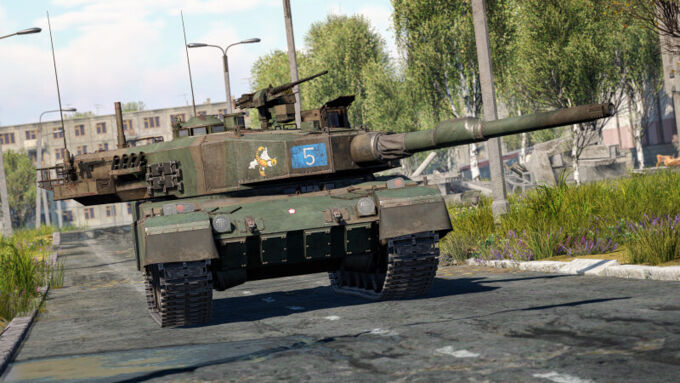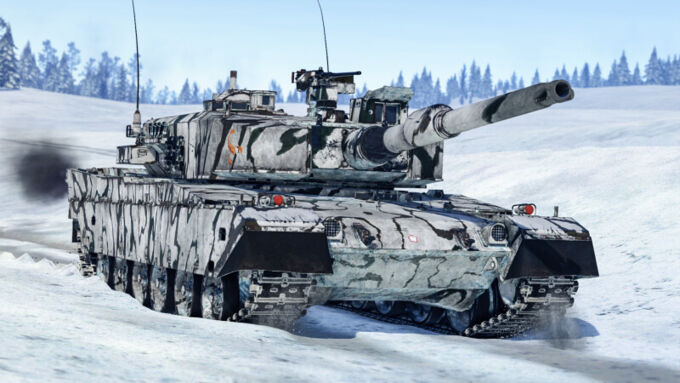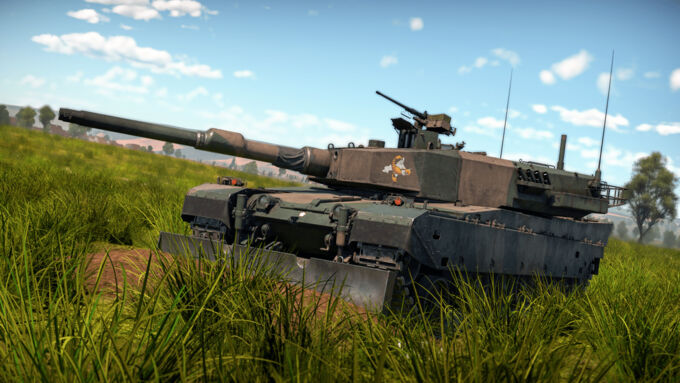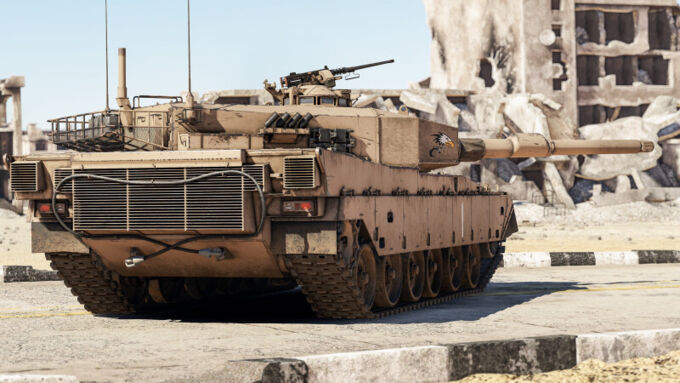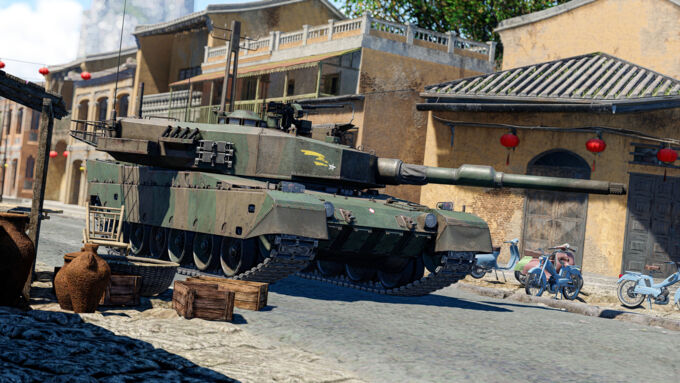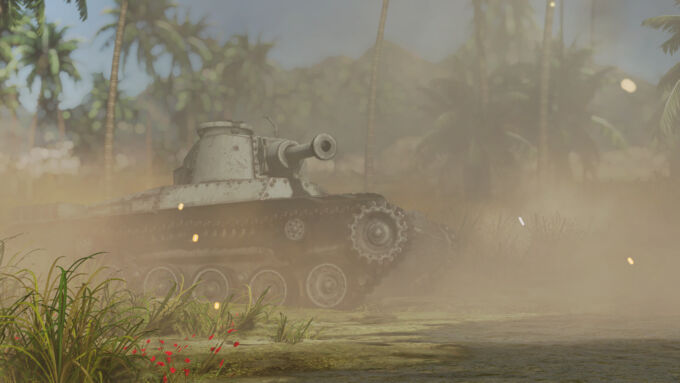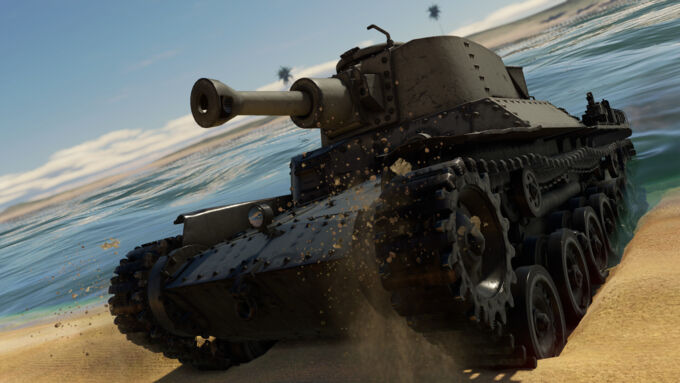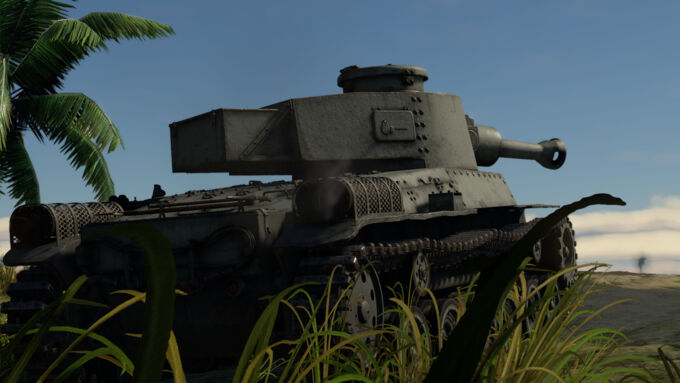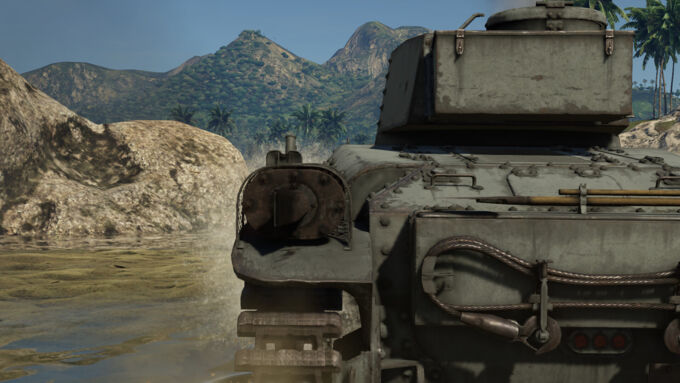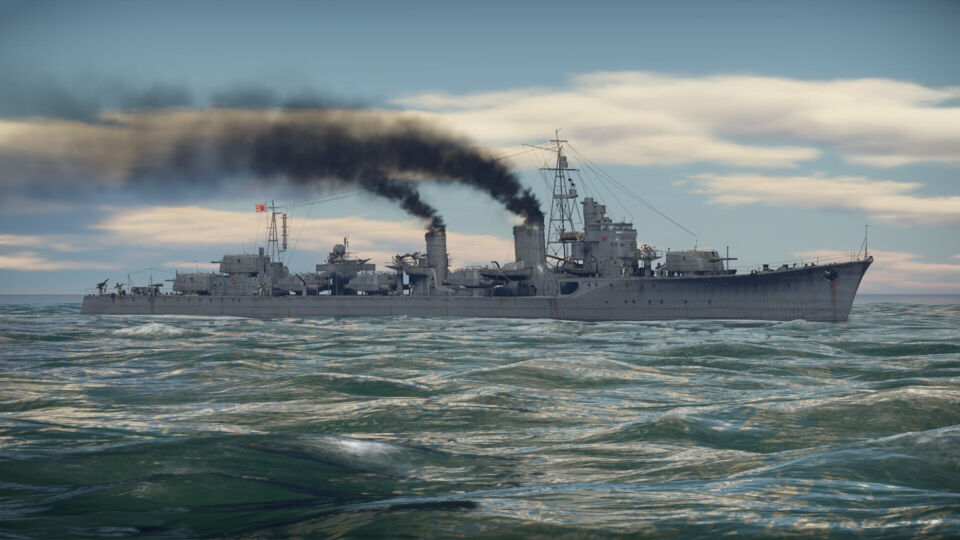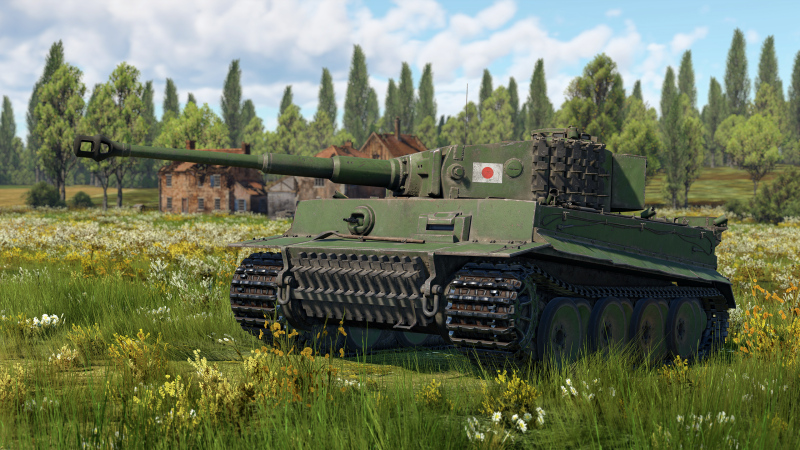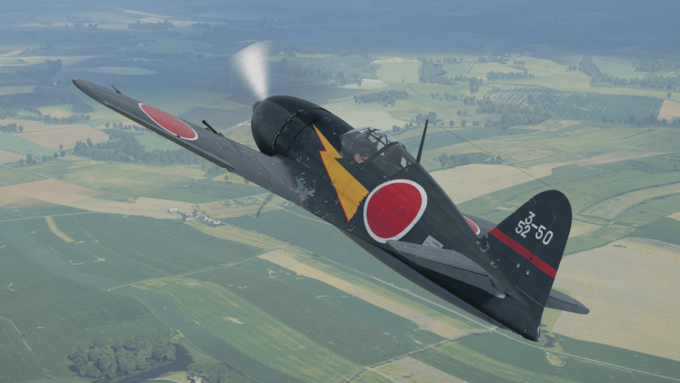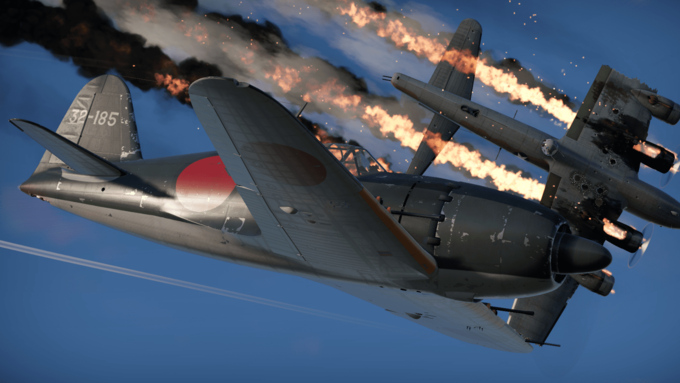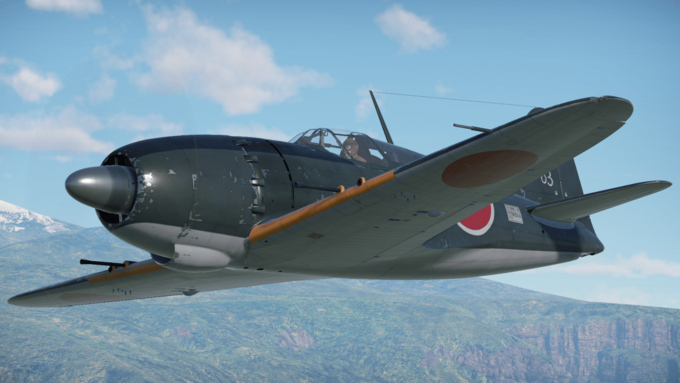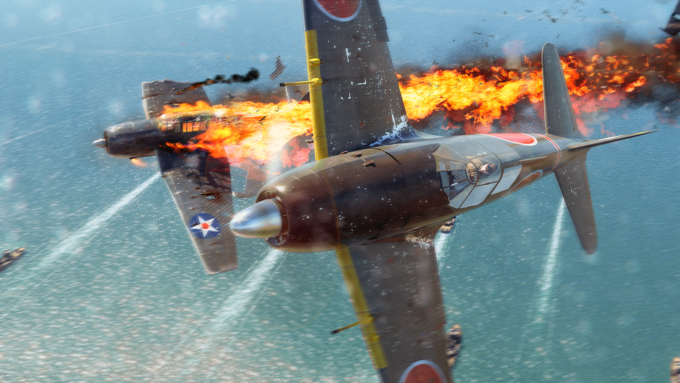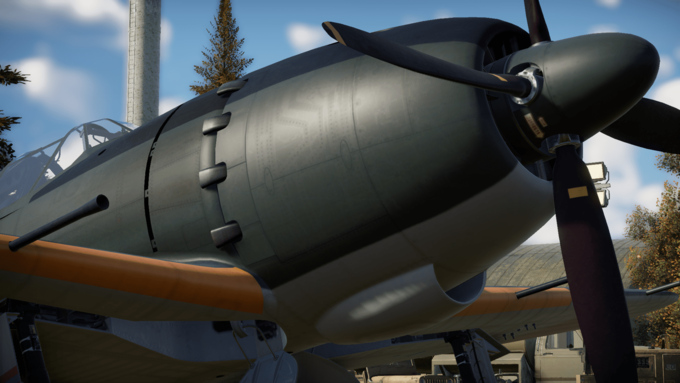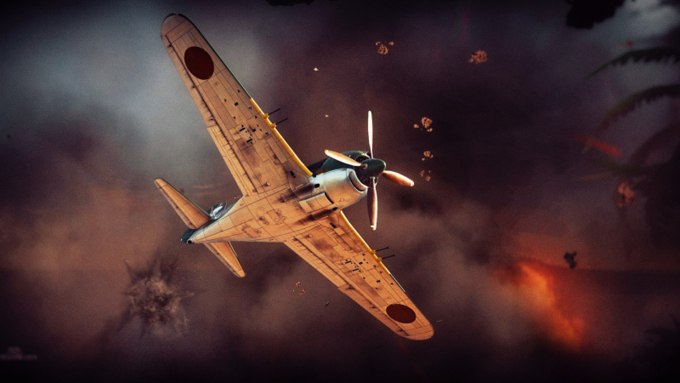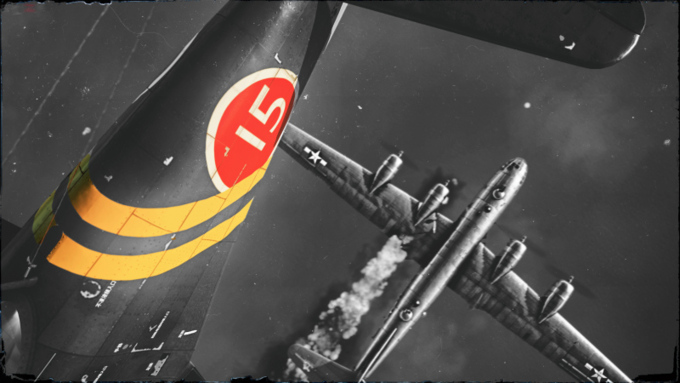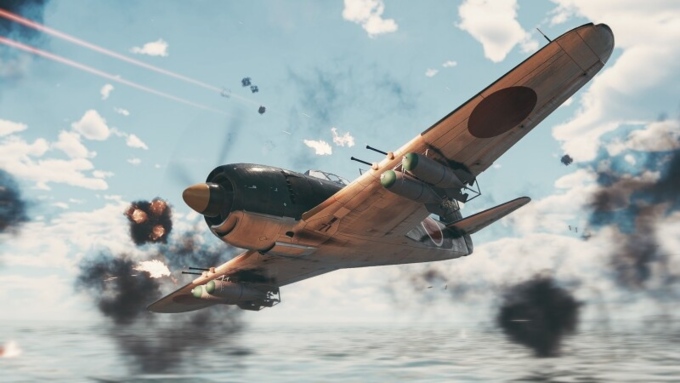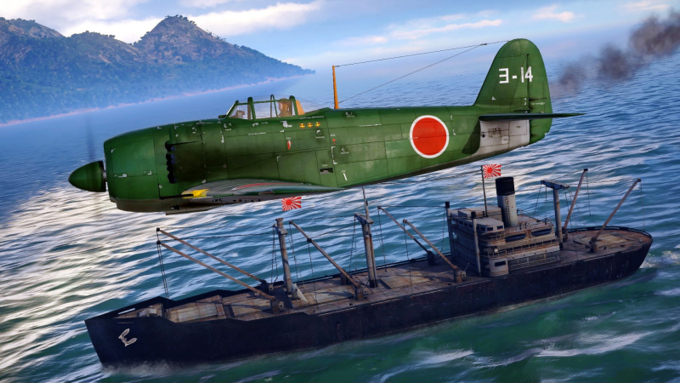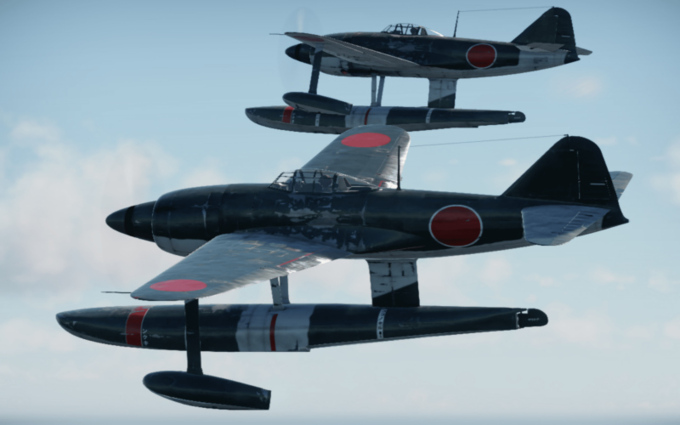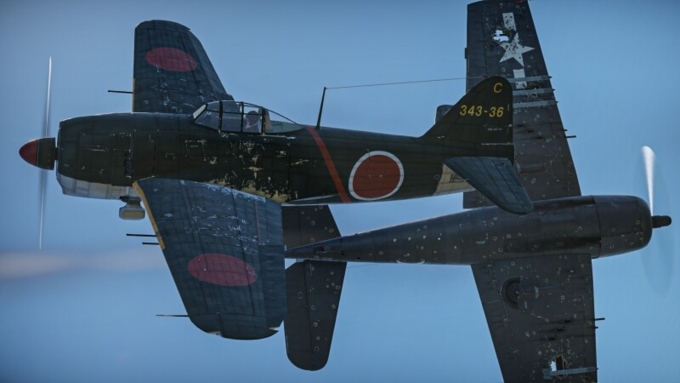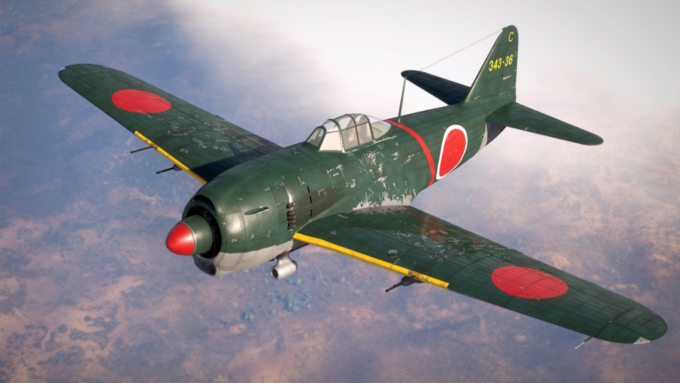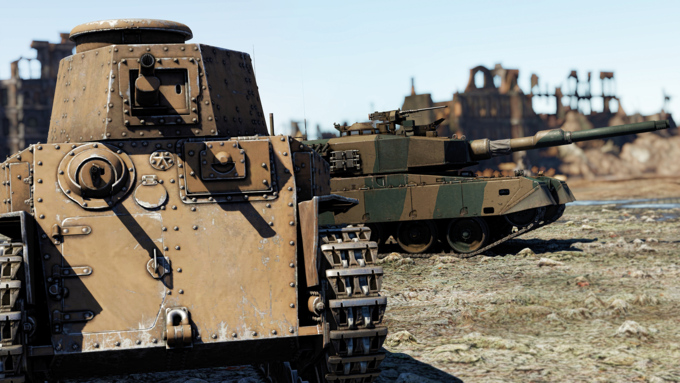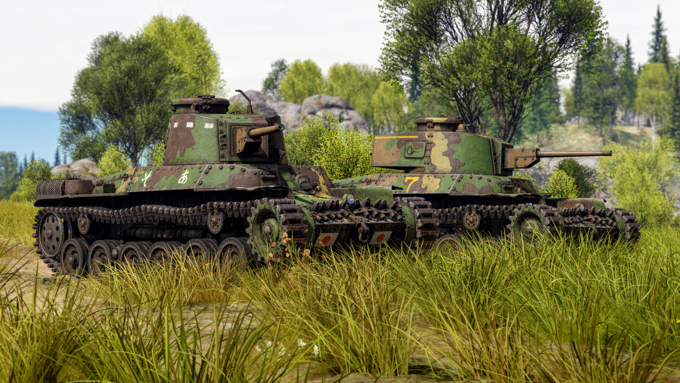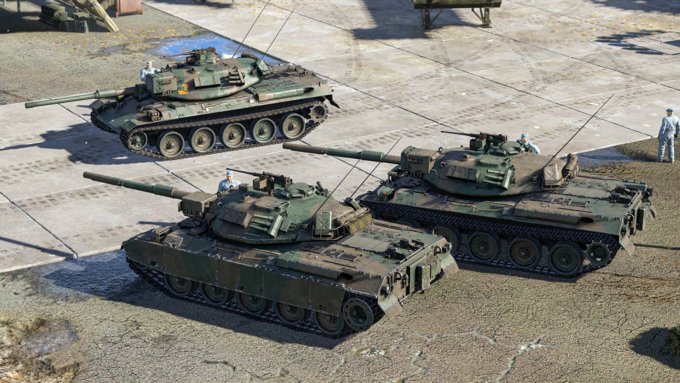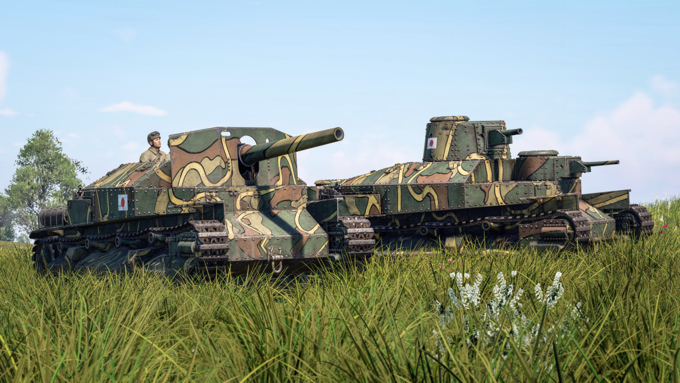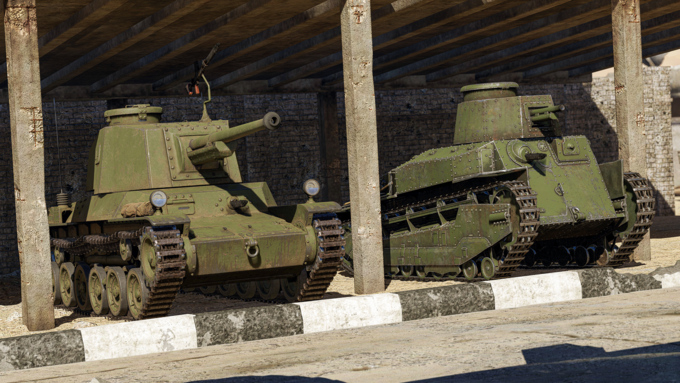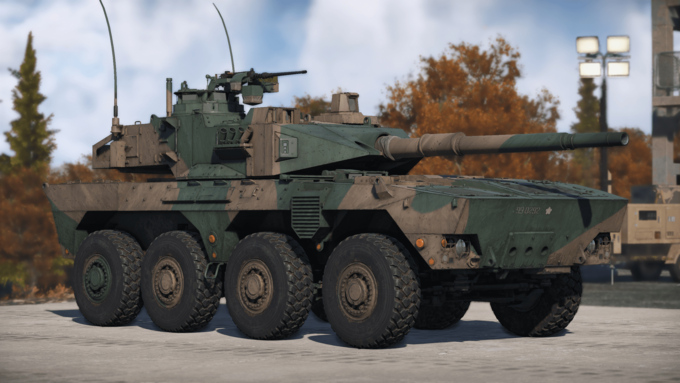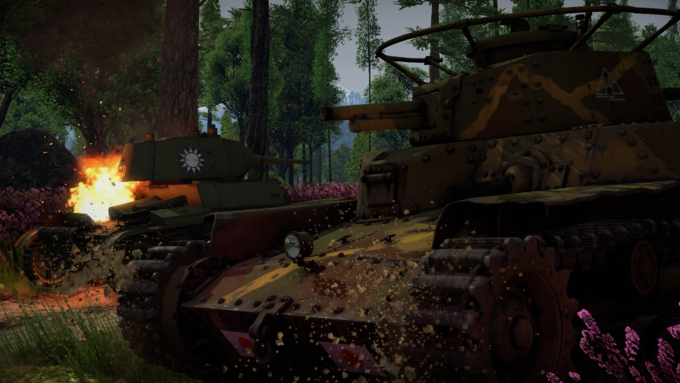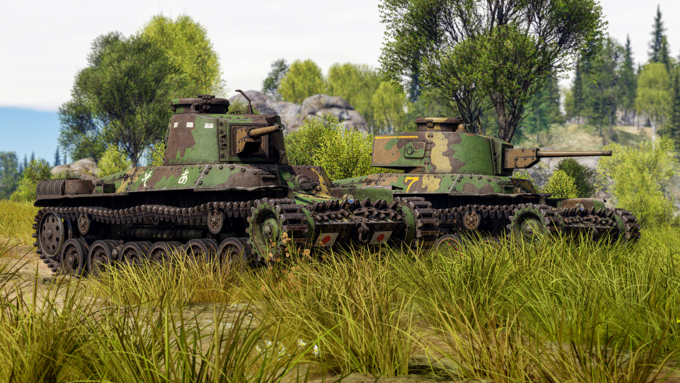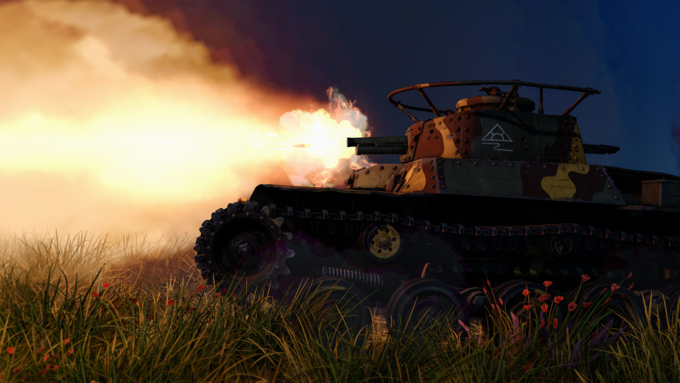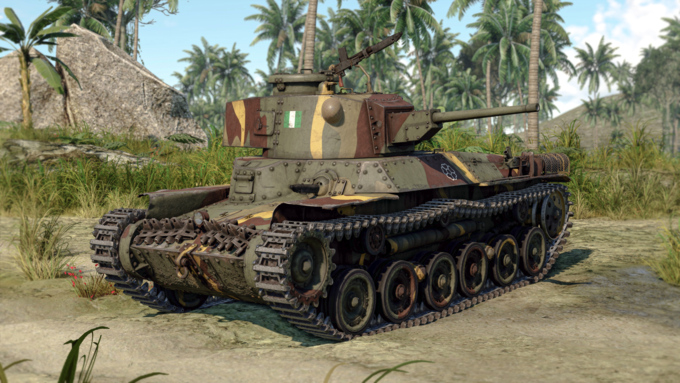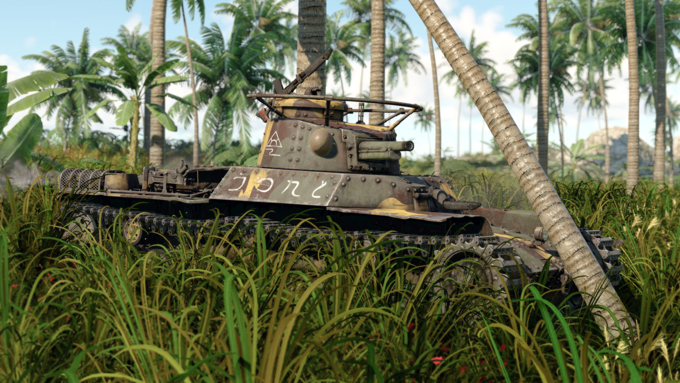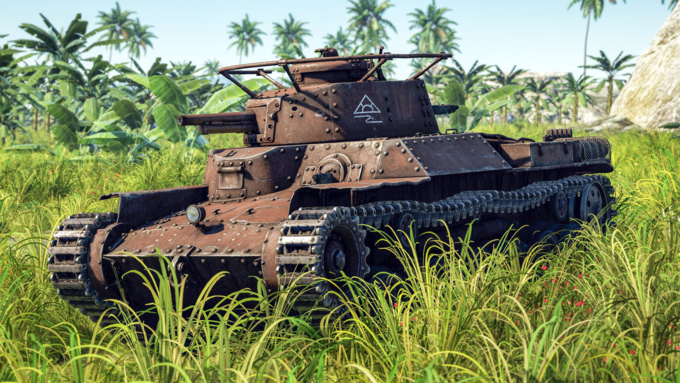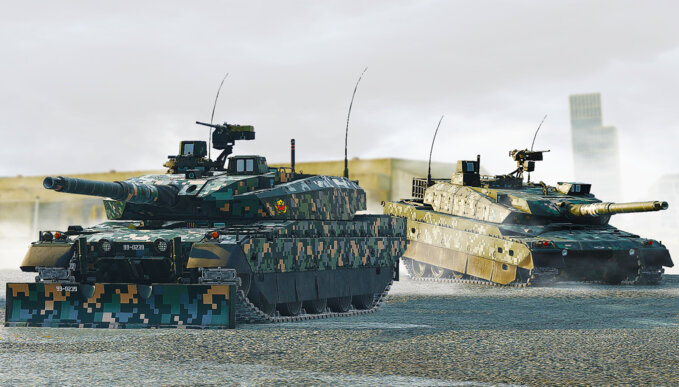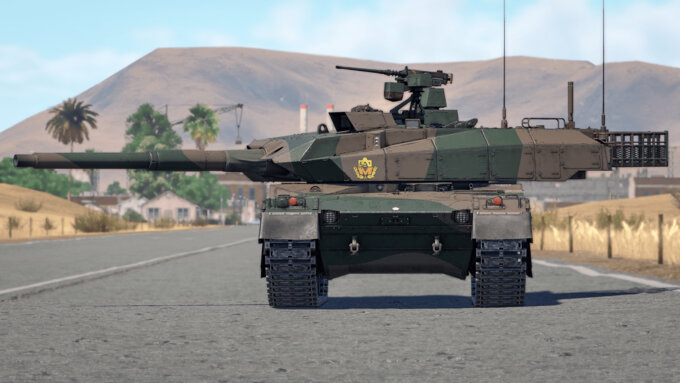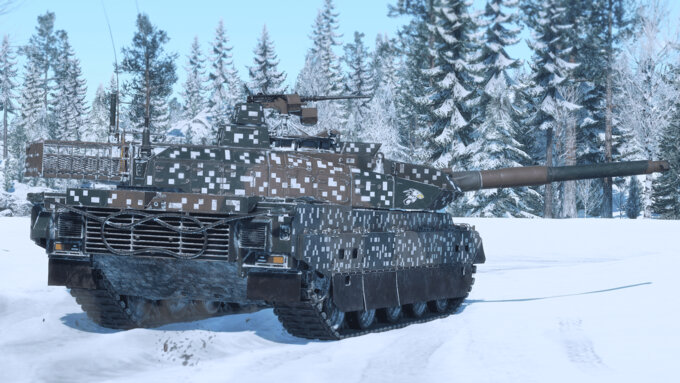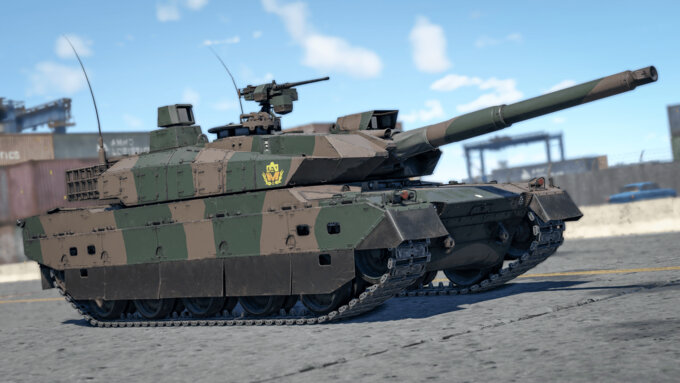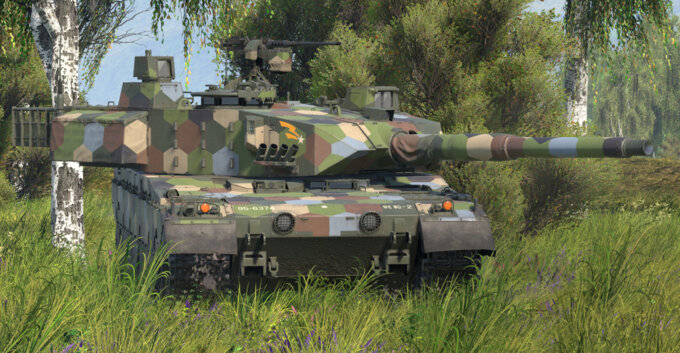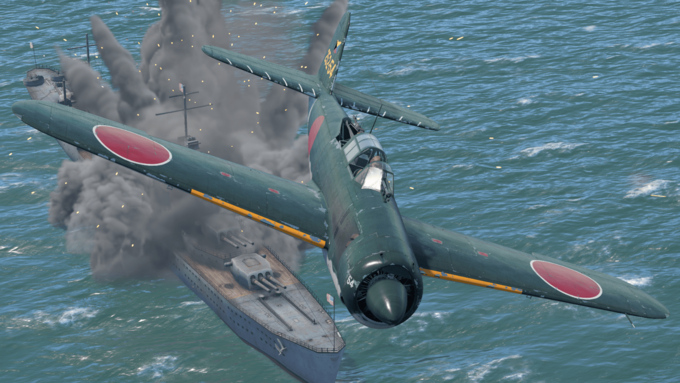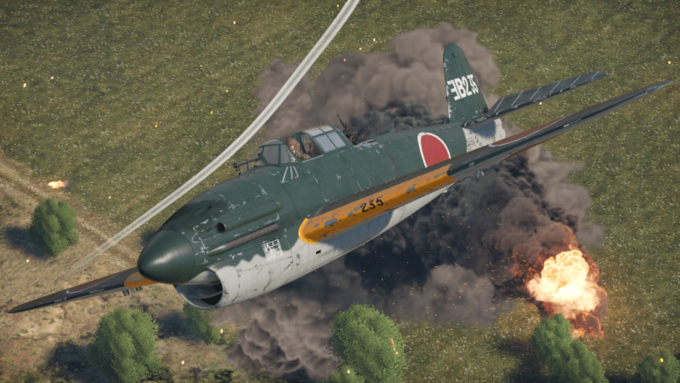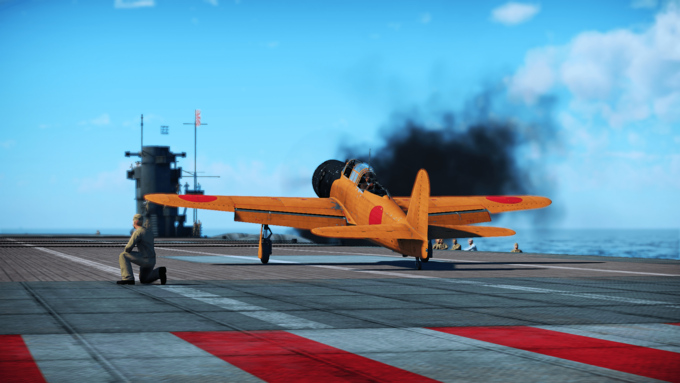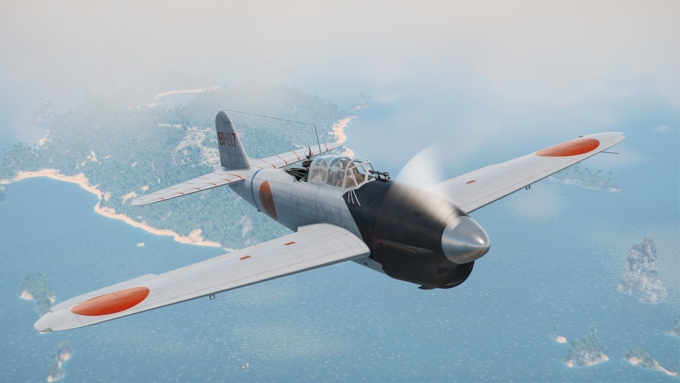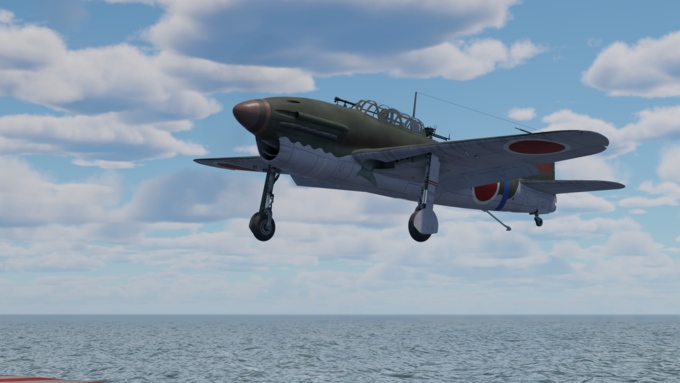The Type 90 (90式戦車) is a third-generation main battle tank (MBT) developed by Mitsubishi Heavy Industries for the Japanese Ground Self-Defense Force (JGSDF). Introduced in 1990 to replace the ageing Type 61 and Type 74, it was designed to counter modern Soviet tanks like the T-72 and compete with Western MBTs such as the M1 Abrams and Leopard 2. Armed with a 120 mm L/44 smoothbore gun, it reflects the standard firepower of Gen 3 tanks. Though still in service, the Type 90 is being supplemented & gradually phased out in favour of the lighter yet more advanced Type 10, shifting as the Japanese Gen 3.5 MBT.
The Type 97 Chi-Ha Short Gun / Short 12cm SPG (短十二糎自走砲) is a later iteration of the Chi-Ha with a modified turret coming from the Chi-Ha Kai, boasting a Navy short gun (120 mm) meant to defend naval bases and merchant ships in a multipurpose role. The Navy's modification of the Chi-Ha was meant to mimic the role of the Army's Ho-I tank to support infantry as a gun tank during the defense of the homeland.
Shimakaze, the only built of her kind, was the fastest large ship of the Imperial Japanese Navy. As part of a three-type modernization of Japanese destroyer roles, Shimakaze served as a Type C, heavy-duty destroyer, utilizing superior speed and more torpedo launch tubes for a quick and decisive torpedo attack before speeding back to safety.
Japan purchased the Tiger E (Chassis No. 250455) under the advice of General Hiroshi Ōshima, the Japanese ambassador in Berlin. General Ōshima had visited the Eastern Front, where he saw the formidable Tiger tank. In May 1943, Japan made an offer to acquire either the blueprints or an actual model of the tank. The plan was to ship the tank to Japan by submarine, intending to strengthen Japanese tank forces and serve as valuable research material. However, the transfer was never completed due to the increasing dominance of Allied naval forces. As a result, the Tiger I was loaned "back" to the Germans and subsequently used in the 101st SS Heavy Panzer Battalion in Belgium.
The Mitsubishi J2M, designated Raiden (雷電), was a single-engine fighter aircraft developed for the Imperial Japanese Navy during World War II. It was designed to intercept high-altitude bombers and had a powerful engine, heavy armament and good speed. The J2M had several variants and was used in combat against American bombers and fighter interception over Japan and performed well, but it suffered from reliability issues and production delays. The J2M was one of the more advanced Japanese fighters of the war, but it could not alter the course of the conflict.
The Kawanishi N1K, designated Kyōfū (強風), was a floatplane designed to operate from water bases where no airstrips were available. While the Kawanishi N1K-J, designated Shiden (紫電), was a land-based repurpose of the N1K, which was considered one of the finest land-based fighters flown by the Japanese and could match the best Allied fighters.
The development of Japanese armoured vehicles began like many other industrial nations, inspired by the pioneering tanks of World War I. Domestic production started in the late 1920s, with Japan's tanks battle-tested during the Sino-Japanese conflict and the early Pacific campaigns of the 1930s. However, stagnation set in due to budget cuts and turmoil in tactics, leaving Japan's tank forces outdated by World War II. Development in the 1940s was largely defensive, and the tanks on the frontlines were from the 1930s, giving a false impression of Japan’s capabilities. After the war, Japan relied on U.S. equipment until regaining sovereignty, when development resumed. Since the 1950s, Japanese tanks have embraced NATO principles while incorporating unique innovations, focusing on advanced, defence-oriented designs to maintain a robust self-defence force.
The Type 10 (10式戦車) is a main battle tank (MBT) of the Japanese Ground Self-Defense Force (JGSDF). Initially accepted into service in 2010 (with effect in 2012) to complement and replace the existing Type 74 and Type 90 main battle tanks. Compared to its predecessors, there was a bigger emphasis on the C4I system, weight reduction, and modular armour.
The Yokosuka D4Y, designated as the Suisei (彗星, Comet), was a series of Japanese dive bombers designed and built by Yokosuka Naval Arsenal during World War II. The D4Y was intended to replace the D3A as the Imperial Japanese Navy's main carrier-based dive bomber. Designed with a strong emphasis on high top speed to outrun enemy interceptors, the aircraft was powered by a licensed German DB 601 inline engine, offering performance unmatched by Japanese engines at the time. However, the DB 601's advanced design proved to be a double-edged sword for both Navy and Army air development. The engine's high cost, requirement for advanced machining, and intensive maintenance needs became a significant bottleneck for production.
